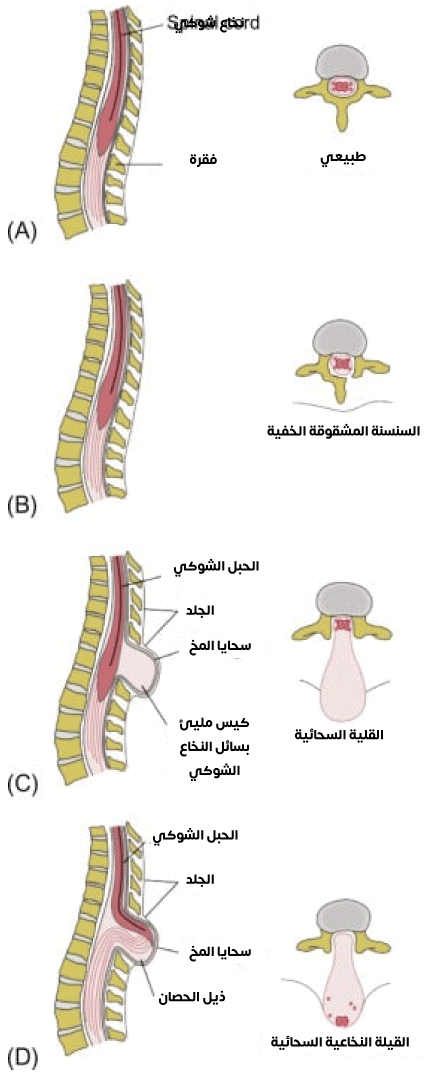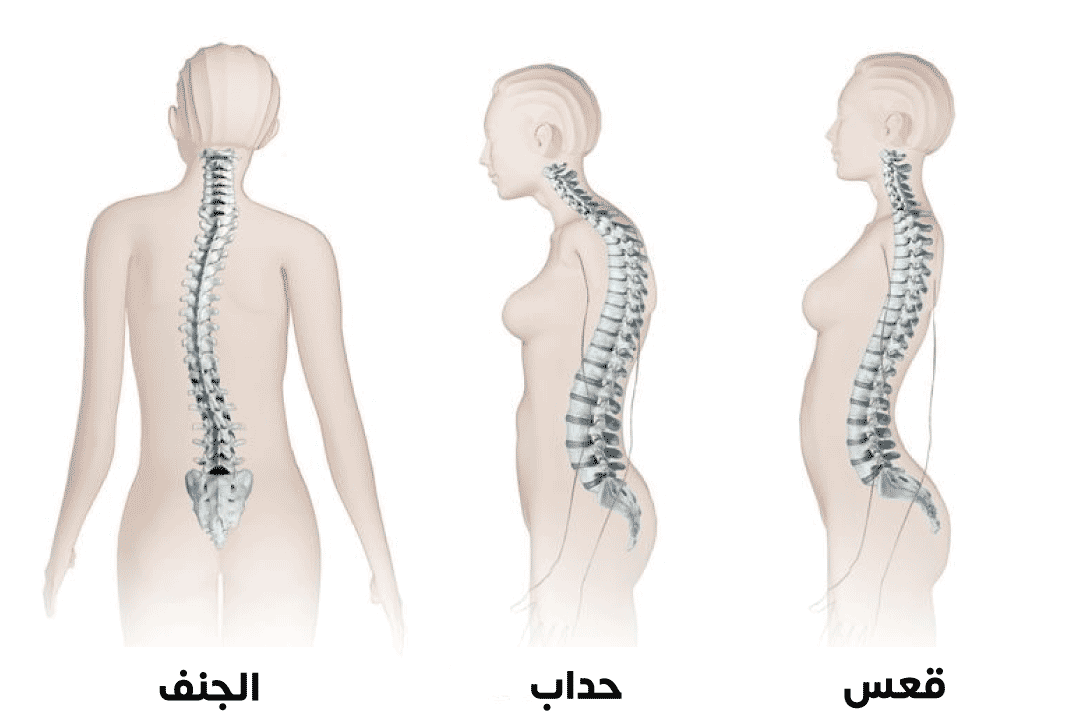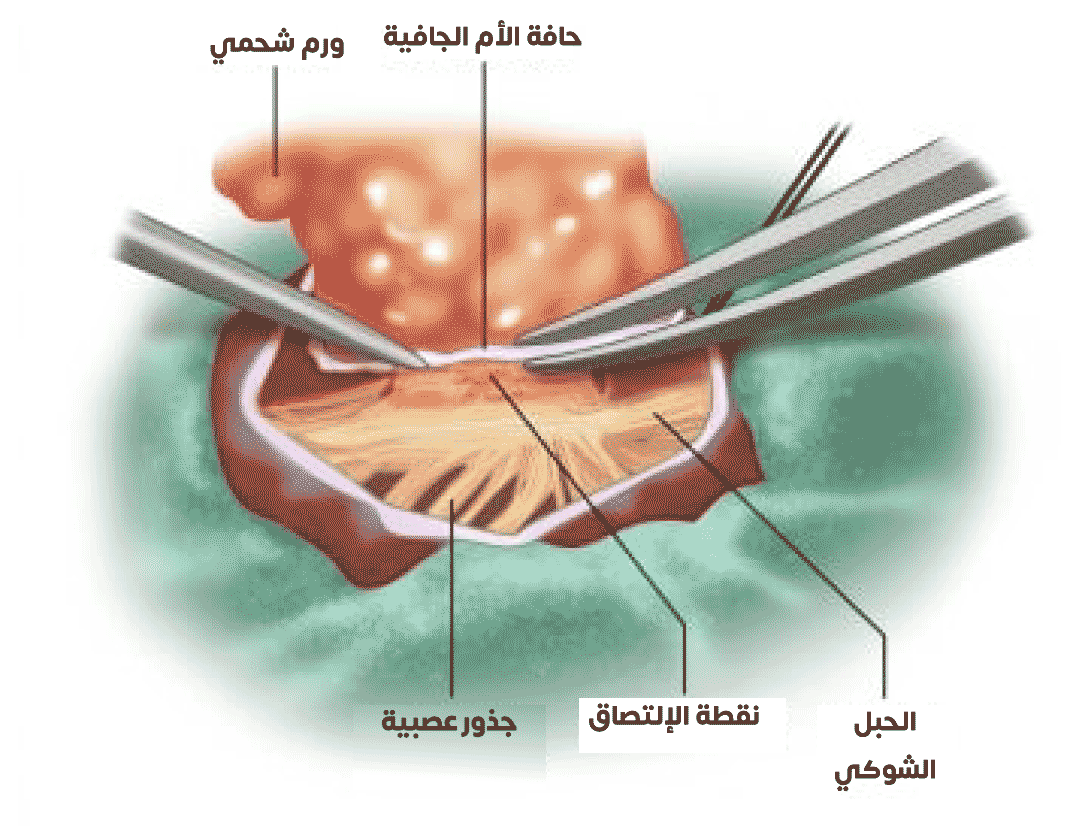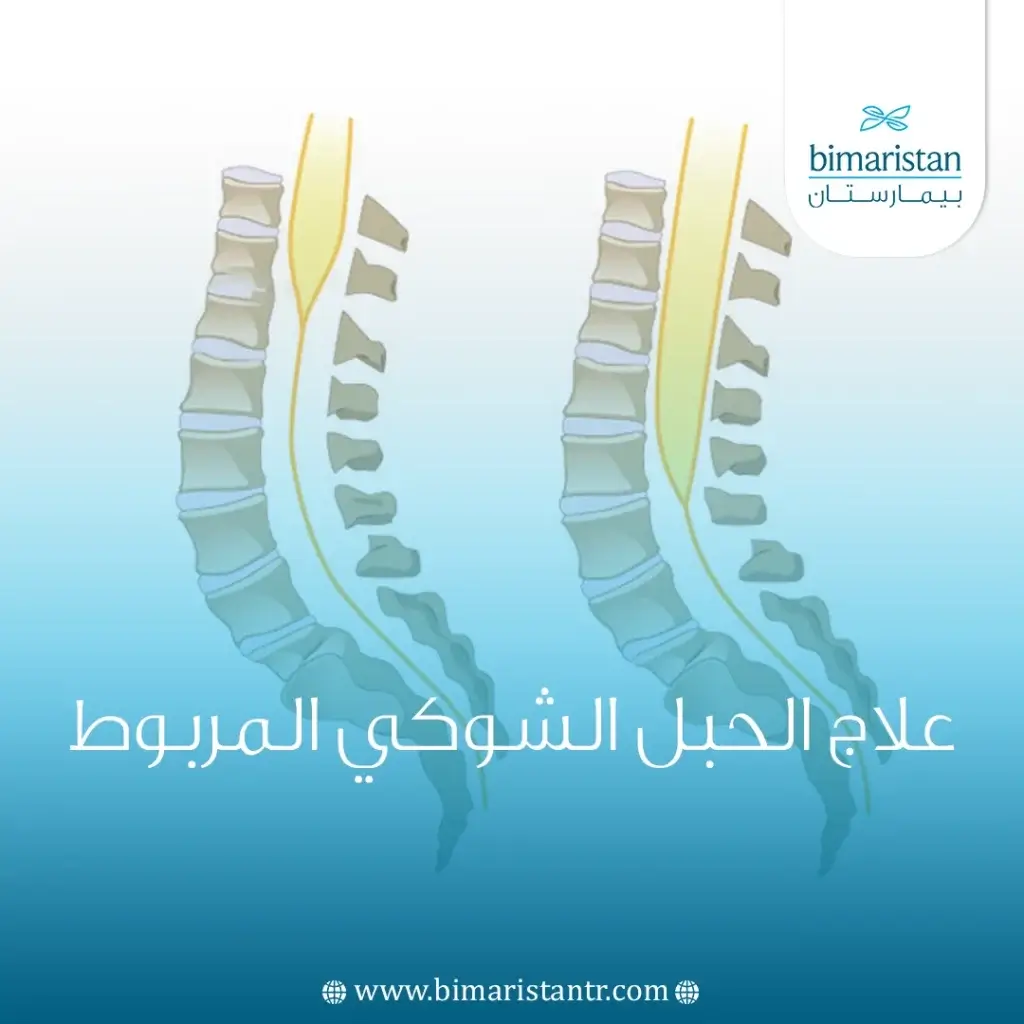إنّ الحبل الشوكي مركز عصبي مهم، وإنّ الاضطرابات التي تصيبه ومنها الحبل الشوكي المربوط tethered cord يجب أن تُعطى اهتماماً خاصاً، وقد تطورت تركيا في مجال العلاج والجراحة العصبية حتى أصبحت من الدول الرائدة في هذا المجال.
ما هي متلازمة تثبُّت الحبل الشوكي TCS؟
إنَّ متلازمة الحبل الشوكي (spine) المربوط أو المثبَّت (tethered cord syndrome) هي اضطراب وظيفي ناتج عن تمدد النخاع الشوكي وتمططه بسبب تثبته من الناحية الذيلية نتيجة اضطرابات خلقية ونادرا مكتسبة (كالأورام) وهي مصطلح يمكن إطلاقه على العديد من الأمراض التي يتثبت فيها النخاع الشوكي.
وهذا التثبت غير الطبيعي يؤدي مع مرور الزمن ونمو النخاع الشوكي نتيجة نمو الطفل إلى زيادة في تمدد النخاع الشوكي وأذية النسيج الدقيق والحساس فيه وظهور أعراض عصبية وجهازية عدة.
ونتيجة تباين سرعة النمو لدى الأشخاص يختلف وقت ظهور الأعراض، فمنهم من تظهر الأعراض لديه في الطفولة الباكرة، ومنهم من لا تظهر الأعراض لديه حتى البلوغ ومنهم من يكون التحدد في الحركة بسيط ولا يعطي أية أعراض.
ما هي أسباب متلازمة الحبل الشوكي المربوط Tethered Cord؟
لنفهم أنَّ هذه المتلازمة هي اضطراب فيزيولوجي وظيفي ينتج عن عدم قدرة الخلايا العصبية في النخاع الشوكي على استخدام الأكسجين ، أي ضعف الاستقلاب التأكسدي، ويرجع ذلك إلى نقص إمدادات الأكسجين (التأثير الإقفاري) بسبب تمطط وتمدد الحبل العصبي، وجزئياً إلى خلل في القنوات الناقلة للأيونات بسبب تمدد الغشاء الخلوي للمحاور والخلايا العصبية.
وصف Garceau لأول مرة “filum terminale syndrome” في عام 1953 عند 3 مرضى، وبعد عقدين من الزمن، في عام 1976، صاغ هوفمان وزملاؤه مصطلح “متلازمة الحبل الشوكي المربوط tethered cord syndrome” لوصف أعراض مرضاهم الذين يعانون من تطاول في الحبل الشوكي وتسمك في الخيط الانتهائي.
قام طبيب يدعى يامادا وآخرون بتوسيع هذا المصطلح ليشمل المرضى الذين يعانون من تشوهات أخرى تسبب تثبت الحبل الشوكي وذلك في عام 1981.
كان يُنظر لهذه المتلازمة على أنها مرض خاص بالأطفال فقط لكن كما ذكرنا سابقاً يمكن أن يكون السبب خلقي او مكتسب ويصيب الكبار والأطفال ولو أنه أشيع بكثير عند الأطفال.
الأسباب الخلقية (الأولية):
إنَّ هذه النسج التي تربط وتثبت النخاع الشوكي تنشأ من عدة تشوهات خلقية وبشكل خاص بسبب الإغلاق المعيب للأنبوب العصبي (من جهة النخاع الشوكي) أثناء التطور الجنيني، وهي حالة تعرف باسم الصلب المشقوق spina bifida.
تشمل أنواع الصلب المشقوق المرتبطة بمتلازمة الحبل المربوط:
القيلة النخاعية السحائية myelomeningocele: وهي عدم اكتمال تشكل عظام القناة العصبية التي يسكن فيها الحبل الشوكي مما يؤدي إلى بروز النسيج العصبي للخارج(القيلة).
وتشمل أيضاً انقسام الحبل الشوكي (diastematomyelia)، وكتلة دهنية حميدة أو ورم (Lipoma) مستمرفي النخاع الشوكي.
الشذوذ الدهني الآخر هو القيلة الشحمية السحائية lipomyelomeningocele، حيث ينبثق الورم الشحمي من القناة الشوكية تحت السحايا، لكنه مغطى بالجلد الطبيعي.

كما يمكن مشاهدة هذا الاضطراب عند المصابين بتشوه ارنولد شياري Arnold Chiari Malformation.
وعند العديد من المرضى، يكون السبب ميكانيكي نتيجة تثخن وفقد مرونة الخطي الانتهائي، وهي حالة توجد غالباً عند الأطفال (الخيط الانتهائي هو خيط من الأنسجة(خلايا دبقية) التي تربط طرف الحبل الشوكي مع عظم العجز)، ويكون هذا بسبب نمو نسيج ليفي غير طبيعي واستبداله للنسيج الدبقي مما يؤدي إلى ربط الحبل الشوكي من نهايته الذيلية.
الأسباب المكتسبة (الثانوية):
يوجد العديد من الأسباب المكتسبة لهذه المتلازمة وقد تكون هذه الأسباب هي مفاقمة لتثبت موجود أصلاً عند الطفل أو البالغ ومنها: الأورام والإنتانات والرضوض أو عمليات سابقة على الحبل الشوكي.
يمكن أن يكون هناك أساس وراثي لهذه المتلازمة نظراً لكون معظم مسببات هذه المتلازمة هي أمراض خلقية ولكن لا يمكننا ربط الوراثة مباشرةً معها لأن هذه المتلازمة اضطراب وظيفي تظهر أعراضه فقط عند شد وتمطط الحبل الشوكي، ومازالت الدراسات قائمة في هذا المجال حيث وجد بعض الباحثون استعداد وراثي لهذه المتلازمة عند بعض المرضى.
ما هي أعراض الحبل الشوكي المربوط Tethered Cord؟
الفرق بين العرض والعلامة أنَّ العرض هو ما يشتكي منه المريض (كألم على سبيل المثال) وأمَّا العلامة هي التي يراها أو يقيسها الطبيب عبر الفحص السريري أو الاختبارات المختلفة.
إنَّ أعراض هذا الاضطراب تختلف باختلاف العمر وبالطبع هنالك أعراض مشتركة.
الأعراض عند الأطفال
وتشمل عدة أعراض تختلف في شدتها بحسب سرعة النمو أو شدة الاضطراب ونذكر منها:
- وجود خصلات من الشعر، كتل، أورام شحمية حميدة، تغير فيي لون الجلد (بقع حمراء أو فقدان لون الجلد) أو حتى اورام وعائية في أسفل الظهر وعلى الخط الناصف عادةً.
- ألم في أسفل الظهر وينتشر إلى الساقين (قد يترافق مع خدر في الأطراف السفلية) عادة يسوء عند الحركة ويتحسن عند الراحة (لا نستطيع تحديده لأن الأطفال لا يستطيعون التعبير عن الألم أو مكانه).
- تأخر في التطور الحركي كالتأخر في المشي السوي.
- تباين في قوة الساقين (أي تكون ساق أقوى من أخرى) ومشية مضطربة أو غير طبيعية وفي بعض الأحيان اختلاجات في الساقين.
الحالات الشديدة يمكن أن يحدث تشوهات في الساقين أو الأقدام أو تشوهات نخاعية كالجنف أو القعس (البزخ).

تترافق هذه المتلازمة غالبا مع عدم التحكم بالبول والبراز (سلس بولي أو برازي) وإنتانات متكررة في المجاري البولية.
الأعراض عند الكبار
ألم مستمر في الظهر والساقين وغالباً ما يكون شديد ويمكن أن ينتشر إلى المنطقة التناسلية أو المستقيم.
غالباً ما يتفاقم ألم الظهر بالانحناء للأمام قليلاً، أو بالجلوس في وضع مستقيم مع تقاطع الساقين، أو عن طريق حمل وزن معتدل (مثل طفل أو كومة من الكتب) عند مستوى الخصر، يُطلق على هذا النمط من الألم أحيانًا “علامة 3-B” وهي للانحناء (Binding)، وجلوس بوذا (Buddha sitting)، وحمل الأطفال(Baby holding).
ضعف حسي وحركي في الساقين قد يؤدي إلى خدر وهزال عضلي (atrophy) فيهما وتعب بعد المشي لمسافات قصيرة.
خلل وظيفي في الأمعاء والمثانة ويتجلى ذلك في زيادة وتيرة أو إلحاح التبول و الإمساك.
كيف يتم تشخيص متلازمة الحبل المربوط tethered cord في تركيا؟
يجب أن يُؤخذ تاريخ المريض بشكل مفصل لأنه يساعد في التشخيص بشكل كبير كما يجب الانتباه لوجود أي من الأعراض أو العلامات السابق ذكرها.
يعد الرنين المغناطيسي الوسيلة التشخيصية الأفضل هنا كما يمكن إجراء CT أو إيكو.
في بعض الحالات، يمكن استخدام تخطيط كهربائية العضلات (EMG) ودراسات التوصيل العصبي لتقييم وظيفة العضلات.
مخطط كهربائية العضلات هو اختبار يسجل النشاط الكهربائي في العضلات الهيكلية (الإرادية) أثناء الراحة وأثناء التقلص.
تظهر التشوهات في هذا الفحص فقط في المرضى الذين يعانون من مرحلة متقدمة من متلازمة الحبل المربوط.
لمعرفة المزيد حول تكلفة التشخيص والعلاج لمتلازمة الحبل الشوكي المربوط Tethered Cord لا تتردد بالتواصل معنا، مركز بيمارستان عائلتك في تركيا.
علاج متلازمة الحبل الشوكي المربوط tethered cord في تركيا
يعتقد معظم جراحي أعصاب الأطفال أن الرضيع أو الطفل الصغير الذي تم تشخيصه بهذه المتلازمة، بغض النظر عن أصلها، يجب أن يخضع لعملية فصل (detethering).
ومع ذلك، هناك الكثير من الجدل حول الإدارة الجراحية لهذا الاضطراب، في حين أن بعض المؤلفين والجراحين يؤيدون الجراحة الوقائية، يقترح آخرون أنه لا ينبغي إجراء الجراحة إلا عندما تظهر الأعراض أو تشتد.
يمكن أن تتم مراقبة الحالة ومتابعتها في حال عدم وجود أعراض على الرغم من وجود تثبت على الMRI.
إنَّ الجراحة هي العلاج المفضل في حال وجود أعراض عصبية ويقوم الجراحون باختيار الطريقة الأمثل للجراحة بناءً على سبب المتلازمة أو شدتها ومدى تقبل المريض للجراحة.

يتم إجراء استئصال للصفيحة الفقرية في الفقرات المواجهة لمكان التثبت، ومن ثم يتم فتح الجافية، ومن ثم يتم تحرير الحبل الشوكي المثبَّت (attached)، إن أمكن، تتم إزالة السبب او الكتلة التي أدت إلى التثبت.
لكن هذه العملية غالباً ما تنكس ويحتاج المريض إلى عدة عمليات أخرى مع تقدمه بالعمر (وخاصةً في حالة الأطفال حيث ينمو الحبل الشوكي لديهم ويحدث لديهم التصاقات جديدة نتيجة هذا النمو).
وإن كثرة عمليات فك الالتصاق Detethering وتشكل العديد من الندب الجراحية يمكن أن يسبب سبب جديد للالتصاقات أو المشاكل الوظيفية في النخاع الشوكي.
طرق جديدة لعلاج الحبل الشوكي المربوط
قام الأطباء في مستشفى جونز هوبكينز Johns Hopkins وعدة دراسات أخرى بتفضيل حل جديد لتكرار التصاقات الحبل الشوكي (أو ما يعرف ب الحبل الشوكي المربوط Tethered Cord)، حيث أنهم وجدوا أنه، وبعد عدة عمليات فك التصاق، تصبح العملية غير مجدية تقريباً في تخفيف الأعراض.
لذلك توجه العلاج نحو تقصير الحبل الشوكي (العمود الفقري) عبر الاستئصال الجزئي أو الكلي لبعض الفقرات (غالباً الفقرة T12).
ساعدت هذه العملية العديد من المرضى في حياتهم اليومية، وحتى يمكن أن يقال أن هذه العملية شافية لهذه المشكلة المستعصية.
وإن مركز بيمارستان الطبي يوجهك نحو أفضل المراكز التخصصية للجراحة العصبية في تركيا، حيث عملت تركيا على إضافة أحدث الأجهزة الطبية واعتماد العمليات الجراحية الأمثل والأحدث في العالم.
الإنذار والمتابعة بعد العلاج
إنَّ المتابعة بعد العمل الجراحي هامة جداً لأنه قد يحدث عودة ربط وتثبت للحبل الشوكي وبذلك نحتاج لجراحة جديدة.معظم المرضى يؤدُّون بشكل جيد بعد الجراحة ومدة التعافي هي من أسبوع لأسبوعين حيث لا يجب على المريض التحرك كثيرا ويبقى في السرير لكي لا تنكس الحالة أو يحدث تسريب للسائل الدماغي الشوكي.
في بعض الأحيان قد لا يمكن تصحيح بعض الإعاقات العصبية والحركية بشكل كامل، لكن أثبتت التجارب والخبرات أن الجراحة بعد فترة وجيزة من ظهور الأعراض تحسن فرص الشفاء ويمكن أن تمنع المزيد من التدهور الوظيفي في وظائف الحبل الشوكي.
يمكن إجراء جلسات من المعالجة الفيزيائية عند مرضى الألم الظهري فوق 65 سنة والتغيير من نمط الحياة لتجنب العوامل التي تحرض الألم.
